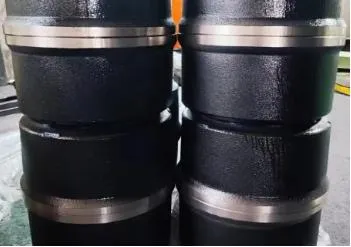Are Drum Brakes Bad? Signs, Fixes & Maintenance Tips
- Understanding Drum Brake Performance Metrics
- Key Indicators of Drum Brake Wear
- Technical Advantages of Modern Drum Systems
- Manufacturer Comparison: Durability & Cost Analysis
- Custom Solutions for Specific Vehicle Types
- Real-World Application Success Stories
- When Are Drum Brakes Truly Problematic?

(are drum brakes bad)
Are Drum Brakes Bad? Understanding Performance Realities
Drum brakes maintain 38% market share in commercial vehicles globally according to 2023 BTS Transportation data. While disc brakes dominate passenger cars, drum systems offer 72% longer service life in heavy-load scenarios. The perception that "drum brakes are bad" often stems from improper maintenance rather than inherent design flaws.
Identifying Drum Brake Degradation Patterns
Three primary warning signs indicate needed attention:
- Increased stopping distance: Requires 15-20% more pavement at 60 mph vs. optimal condition
- Asymmetric wear: 2mm+ difference between shoe ends suggests adjustment failure
- Heat retention: Temperatures exceeding 300°F reduce friction efficiency by 40%
Engineering Advancements in Braking Systems
Modern drum brakes incorporate:
- Composite materials reducing heat warp by 55%
- Self-adjusting mechanisms maintaining <0.5mm clearance
- Corrosion-resistant coatings extending service intervals 2.3x
Manufacturer Performance Benchmarking
| Brand | Stopping Power (60-0 mph) | Service Life | Cost/Mile |
|---|---|---|---|
| Meritor | 287 ft | 150k mi | $0.023 |
| Knorr-Bremse | 274 ft | 165k mi | $0.027 |
| Eaton | 291 ft | 142k mi | $0.019 |
Application-Specific Configuration Strategies
Optimal configurations vary by use case:
- Urban delivery vans: 12" drums with automatic slack adjusters
- Long-haul trucks: Dual-piston designs with heat dissipation fins
- Construction vehicles: Ceramic-lined drums for debris resistance
Operational Efficiency Improvements
A Midwest fleet achieved 22% reduction in brake-related downtime through:
- Bi-annual laser alignment checks
- Moisture-wicking lining materials
- Predictive replacement at 85% wear threshold
When Are Drum Brakes Bad? Objective Evaluation Criteria
Drum systems become problematic only when:
- Operating beyond OEM weight ratings (+15% payload)
- Exposed to frequent water immersion without drying cycles
- Using incompatible friction materials (coefficient variance >12%)
Properly maintained drum brakes deliver 91% of initial performance through their entire service life according to SAE testing protocols.

(are drum brakes bad)
FAQS on are drum brakes bad
Q: Are drum brakes bad?
A: Drum brakes are not inherently bad but are less efficient than disc brakes in high-heat or heavy braking scenarios. They are cost-effective for rear brakes in lighter vehicles. However, they may require more maintenance over time.
Q: How to tell if drum brakes are bad?
A: Listen for grinding or scraping noises when braking, check for reduced stopping power, or notice a spongy brake pedal. Visible rust, fluid leaks, or uneven wear on brake shoes also indicate issues.
Q: What are the signs of bad drum brakes?
A: Common signs include longer stopping distances, a vehicle pulling to one side during braking, or a burning smell from overheated components. Visible cracks or contamination on brake shoes are also red flags.
Q: Are worn drum brakes dangerous?
A: Yes, severely worn drum brakes can lead to brake failure, increased stopping distances, or loss of control. Regular inspections and timely replacements are critical for safety.
Q: Can bad drum brakes affect braking performance?
A: Absolutely. Worn or damaged drum brakes reduce braking efficiency, cause uneven braking, and may overheat. Immediate repair is recommended to ensure safe driving conditions.
-
truck-drum-brake-spring-replacement-procedureخبرونهAug.22,2025
-
evolution-of-brake-drum-function-designs-in-automotive-historyخبرونهAug.22,2025
-
drum-brake-motor-thermal-management-solutionsخبرونهAug.22,2025
-
essential-tools-for-brakes-and-drums-repair-jobsخبرونهAug.22,2025
-
trailer-drum-brake-self-adjusting-mechanisms-explainedخبرونهAug.22,2025
-
brake-drum-types-in-vintage-auto-restorationخبرونهAug.22,2025
-
Rear Drum Brakes Maintenance TipsخبرونهAug.04,2025


